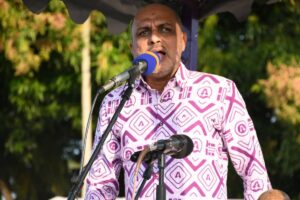By Sia Mrema
The media industry in Tanzania is regulated by various laws and regulations, which were enacted from 2016 to 2020. Specifically, these are the Media Services Act, 2016; the Access to Information Act, 2016; the Electronic and Postal Communications Act (Online Content ) Regulations, 2020, as amended in 2022, and the Electronic and Postal Communications (Radio and Television Broadcasting Content) (Amendment) Regulations, 2020.
However, these laws and regulations are widely regarded as an impediment to freedom of expression, contrary to the Constitution of United Republic of Tanzania and the International Covenant on Civil and Political Rights (ICCPR).
It is worth noting that the East Africa Court of Justice (EACJ) declared in its judgment delivered on March 28, 2019 that certain provisions of the Media Services Act, 2016 restrict press freedom and freedom of expression.
The EACJ verdict shone a light on Section 7 (3) (a), (b), (c), (f), (g), (h) and (j); sections 19, 20, 21; sections 35, 36, 37, 38, 39 and 40; sections 50 and 52; sections 53 and 54 and sections 58 and 59. However, only a handful of amendments had been carried out as of June 2023, specifically to sections 5, 38, 50, 51, 53, 54, 55, 63 and 64.
What this tells us in a nutshell is that the media industry is possibly among the most overregulated sectors in Tanzania.
The Media Services Act, 2016
This Act provides for ownership, rights and obligations of media houses, accreditation of journalists, offences, penalties and other regulatory frameworks under which the industry operates.
Section 19 of the Act, which provides for accreditation of journalists, is especially problematic. Section 3 defines a “journalist” as a person accredited under the Act, who gathers, collects, edits, prepares or presents news, stories, materials and information for a mass media service, whether in the capacity of an employee of a media house or a freelancer.
Most of the listed functions of accredited journalist are undertaken by people in exercising their right to freedom of expression. However, to set mandatory accreditation for journalists amounts to restricting the right to freedom of expression.
The term “journalist” is difficult to define with precision. This was observed by the UN Human Rights Committee in its General Comment 34: “Journalism” is a function shared by a wide range of actors, including professional full-time reporters and analysts, as well as others, who engage in forms of self-publication in print, on the internet or elsewhere.
Section 7(1)(d) of the Act, which provides for rights and obligations of private media houses, is another flawed provision. It partly states under Paragraph IV, “…to broadcast or publish news or issues of national importance as the Government may direct”. This is blatant restriction of the right to freedom of expression since it means that the government has the power to control private media houses and determine what they should or should not publish and which matters are of national importance.
Sections 35-39, which provide for criminal penalties in defamation cases, is equally draconian and restricts freedom of expression.
The Access to Information Act, 2016
This Act revolves around the right to access information, exempt information and obligation to provide information in addition to related offences and other legal frameworks.
Of special interest is Section 2(2), which covers the application of this particular law. It applies not only to public entities, but also to private bodies registered under any written law which utilise public funds or are in possession of information which is of “significant public interest”. However, the term “public interest” is not defined under the Act and it is therefore difficult for private entities to know exactly which matters are of public interest and which are not.
Section 5 states under Subsection 4 that it is only citizens of the United Republic of Tanzania who have the right to access information which is under the control of an information holder. This essentially locks out foreign journalists based in Tanzania and this restricts access to information.
The Electronic and Postal Communications Act (Online Content) Regulations 2020 as Amended 2022
These regulations provide for the licensing of online content services. Regulation 5, which outlines categories of licences, is vague and ambiguous.
On licensing of online media services, Category A includes “online content services”, whereas Category B includes “content aggregation”. The issue here is the vague definition of “online content services” and whether it covers all online content service users or subscribers.
Under Regulation 3, “online media services” apparently means “online content services provided for the purpose of news and current affairs in a manner similar to, or in a manner that resembles services providers licensed under the Act”.
However, under Regulation 3(b), “online content services” means “internet content broadcasting or aggregation to the public through television, radio, blog, weblog, instant messaging tools, and social media and applications”.
It is thus not clear as to whether member of the public require licences to access social media, websites, blogs and instant messaging tools on the internet.
The Electronic and Postal Communications (Radio and Television Broadcasting Content) (Amendment) Regulations 2020
These regulations regulate radio and television content.
Regulation 4(2) states that licensees are prohibited from hooking up with other content service providers for transmission of programmes, whether local or foreign, without the express approval of the Tanzania Communications Regulatory Authority. This restricts the right to freedom of expression.
Sia Mrema is an Advocate of the High Court in Tanzania















